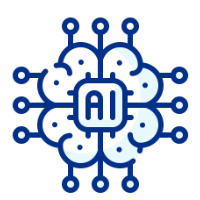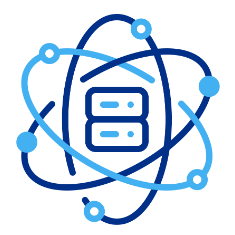The Complete Guide to the AI Project Cycle
The AI project cycle is a structured sequence of steps followed to develop and deploy an AI solution effectively. It ensures that AI projects are well-planned, executed, and evaluated to meet business or research objectives.
In this AI Tutorial, we will explore the stages of the AI Project Cycle, including planning, building, deploying, and optimizing AI solutions. Start learning AI with the Free Azure AI-900 course to build your skills and to gain practical experience.
Let’s dive into each stage of the AI Project Cycle in detail.
Stages of the AI Project Cycle

1. Problem Definition
Every AI journey starts with a clear understanding of the problem you’re trying to solve.
- What business or real-world problem needs a solution?
- Can this problem be solved with AI or traditional programming?
- What outcome are stakeholders expecting?
Example:
A bank may want to reduce fraudulent transactions. The problem is defined as: "Identify potentially fraudulent credit card transactions in real time."
Key Deliverables:
- Problem statement
- Success criteria
- Business KPIs
2. Data Collection and Acquisition
AI thrives on data. The quality and quantity of your data significantly influence the model’s accuracy.
Steps:
- Identify relevant data sources (databases, APIs, sensors, etc.)
- Ensure data privacy and compliance (e.g., GDPR, HIPAA)
- Store data securely in a data lake or cloud storage
Tools: Azure Data Factory, AWS S3, Python scripts, web scraping tools
| Pro Tip: Make sure data is representative, clean, and balanced across all classes (especially in classification problems). |
3. Data Preparation and Exploration
This is often the most time-consuming phase, but also the most critical.
Includes:
- Data cleaning: Removing duplicates, fixing missing values, handling outliers
- Data transformation: Encoding categorical variables, normalization
- Exploratory Data Analysis (EDA): Understanding patterns, distributions, and correlations
Tools: Pandas, NumPy, Matplotlib, Seaborn, Azure Machine Learning Studio
Outcome: A clean, feature-engineered dataset ready for modeling.
4. Model Building and Training
Now comes the core of the AI project—building and training models.
Approaches:
- Supervised learning: Classification, regression
- Unsupervised learning: Clustering, anomaly detection
- Deep learning: Neural networks, transformers
Pre-trained models (e.g., GPT, BERT, Azure OpenAI models)
Steps:
- Choose algorithms (e.g., decision trees, SVM, neural networks)
- Split data into training, validation, and test sets
- Train and tune models
Tools: Scikit-learn, TensorFlow, PyTorch, Azure ML
Example: A retail company wants to reduce customer churn by predicting which customers are likely to stop using the service.
5. Model Evaluation
Goal: Assess the model’s accuracy and performance.
- Accuracy, Precision, Recall, F1-score
- Confusion matrix and ROC-AUC
- Use cross-validation for better results
6. Model Deployment
Goal: Integrate the model into a production environment.
- Deploy via APIs or integrate with applications
- Monitor performance in real-time
- Establish feedback loops
Tools: Flask, Django, AWS SageMaker, Azure ML
7. Model Monitoring and Maintenance
Goal: Continuously monitor and update the model.
- Detect model drift
- Retrain with updated data
- Collect feedback to improve performance
Best Practices for Managing AI Projects
- Start with a clear goal
- Ensure high-quality data
- Use feedback loops for continuous improvement
- Encourage cross-functional collaboration
- Focus on model explainability
Conclusion
The AI project cycle is more than just model training; it's a structured journey from identifying a problem to deploying and maintaining an intelligent solution. Following this framework helps reduce risks, enhance results, and ensure your AI project delivers real-world value. Start your AI journey by mapping out your next project using this AI Project Cycle.
Boost your AI skills with Scholarhat’s Azure AI Engineer program and Azure AI Foundry Certification to gain hands-on experience with Microsoft AI tools and build real-world expertise











